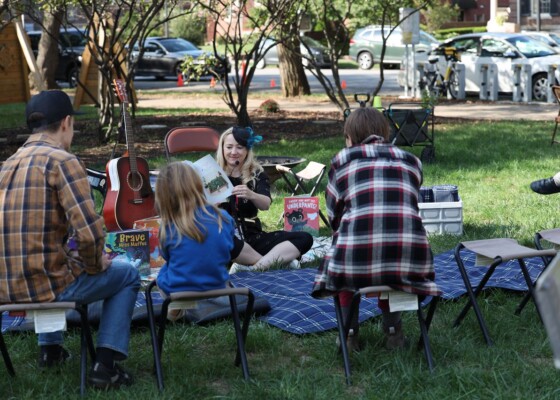The Mysterious Meredith Nicholson Connection
September 28, 2020Indiana Humanities has the ability to bring people together. There is no better example of this than how I came to intern at the home of my great-great-grandfather. It is…
Indiana Humanities has the ability to bring people together. There is no better example of this than how I came to intern at the home of my great-great-grandfather. It is hard to deny that 2020 continues to bring many changes, for better and for worse. In my case, the uncertainty has turned out to be quite extraordinary. Only a few months ago, I was spending my semester abroad, seeking internships from a little apartment in Scotland. As I was scrolling through opportunities, Indiana Humanities appeared. Immediately interested in their work, I applied and awaited to hear if I could interview. The next few weeks went by in a flash, and amid returning home to Indiana and adjusting to change, I received an email to interview.
After the interview concluded, I went to tell my family more about the organization. As we admired their vast history in programming and grant distribution, a picture of Indiana Humanities’ office eventually appeared. My mom adjusted her glasses and said, “Wait, is that Meredith Nicholson’s house?” I had grown up knowing who Meredith was and his importance as the bestselling Indiana author of The House of a Thousand Candles yet unaware of his relation to Indiana Humanities. I remember my mom and I laughing and agreeing, “That would have been great to know before the interview.”
Fortunately, Indiana Humanities invited me to serve as the communications intern, even without knowing my family history. By my first day, I learned that George Hanlin, our director of grants, has a passion for preserving Indiana history. Throughout the summer months, George made an environment that encouraged me to pursue and discover more about my lineage. What felt like a name I had always known was now replaced by a consuming desire to understand what this connection meant. Alongside my normal duties, I spent my time looking through storage to find letters, photos and other documents related to the Nicholsons. Every discovery produced a new puzzle to solve, and with the invaluable help of George, we began to put the pieces together.
The letters prove that Meredith corresponded with Booth Tarkington, James Whitcomb Riley, William Dean Howells, Woodrow Wilson and Theodore Roosevelt. Reading these letters for the first time was indescribable. Meredith’s correspondents were not only significant figures in Indiana but impactful national figures as well. It amazes and encourages me to think there is other information out there, in undiscovered attics or libraries. Although more work is to be done, this summer demonstrated how the interest of a few can shed light on treasured pieces of history.
Included with this post are photos of my great-grandfather and Meredith’s son, Charles Lionel Nicholson. We found a photo album that contained memories of the Nicholsons, mostly in outdoor settings. Witnessing George identify faces to names is like watching a real historian, even recognizing the ones with overexposed coloring and worn edges.
It can be difficult to make sense of the things we cannot control. Time and time again, we turn to the humanities to enrich and open our minds. The humanities benefit from being shared among a community, because they belong to everyone. I hope this story reflects that despite the immense uncertainties of this year, the humanities have enriched and opened my mind to make sense of the things I cannot control. I would have never anticipated having this connection, and that is the beauty of the unknown. The realization is that we must trust the humanities are innately powerful, and more effective when we come together to “think, read, and talk.”
Katie Noble, Indiana Humanities’ summer communications intern, wrote this post. Katie is a senior at DePauw University studying political science and philosophy.


